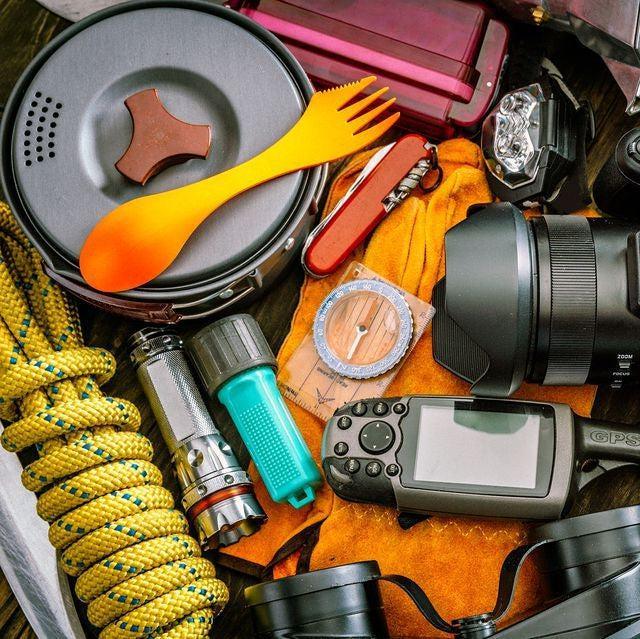How To Tie And Use A Bowline Knot
Share
A few knots are staples of the prepping, bushcraft, and survivalist communities and the simple bowline is one of those knots.
The bowline knot is a loop tied at the end of a line and can retain two-thirds of the rope’s strength, whereas often, a knot will reduce the breaking strength of a rope by 50 percent.
The drawbacks to the bowline are that it can loosen when not under load and form a slipknot under certain circumstances.
Despite these few drawbacks, the bowline is a reliable knot that needs to be in your knot-tying arsenal.
History of The Bowline Knot
In nautical terms, the bowline is the line that secures the square sail to the ship’s bow. John Smith’s work “A Sea Grammar,” published in 1691, mentions a knot by the name of the Boiling Knot, which is thought to be what we consider today to be a bowline knot.
Evidence of bowline use was even found on Pharaoh Khufu’s solar ship during an excavation in 1954, making the bowline knot quite possibly thousands of years old.
Bowline Knot Uses
A bowline knot finds use anytime that you want a fixed loop at the end of a line. A couple of personal examples of what I use a bowline for are detailed below.
- I like to use a bowline for the loop at the starting end of a ridgeline. I can run a line around a tree and through the bowline, creating what is referred to as a ‘running bowline”.
- I’ll often use a bowline to secure a line to a ring or other lifting hardware.
- Bowline knots are securing the throwlines on both the bow and stern of my canoe.
- In most instances where I will lift an object with a rope, I tie the line to that object with a bowline.
- To secure loads, I will use a bowline on one end and a trucker’s hitch on the other.
Related: The Only 4 Knots That You’re Going To Actually Use In A Survival Situation
Knot Terminology
There is a couple of knot-tying terms that I will be using throughout this article which are defined below.
Standing End – This is the end of the line that is not involved in the tying of the knot. This portion of the line will largely remain stationary.
Working End – This is the end of the line that you are actively using in the tying of the knot.
Tag end – The tag end is the portion of the knot that’s the remainder of the working end. Tag ends can be trimmed or tied off using a half hitch or two.
Tying a Bowline Knot
The procedure for tying a bowline knot is very straightforward, and after practicing a few times, it will become almost second nature.
1. Start with an overhand loop in your line. Consider how large your loop is going to be and leave enough rope to form the loop.
 2. Pass the working end up through the loop like shown above.
2. Pass the working end up through the loop like shown above.

3. Bring the working end around the backside of the standing end.

4. Pass the working end of the line down through the loop, as shown above.

5. Tighten and dress up the knot.

Variations
There are a couple of variations that are worth mentioning.
The first is to simply tie a half-hitch or two with the tag end around the line below the knot. This is a redundancy that I like to use only if I find myself with more of a tag end than I’d like.
These next two variations are similar to the traditional bowline but require a few additional steps to complete.
The Double Bowline
The double bowline is a more secure knot than the traditional bowline and is often used by sport climbers. One of the advantages is that it is easier to untie after sustaining a weighted fall.
The disadvantage to using a double bowline to tie in while climbing is that it is a less secure knot than the traditional figure-eight knot.
To tie a double bowline, follow these steps:
1. Start with an overhand loop like the traditional bowline knot.

2. Then make a second loop over the top of the first one like shown.

3. Pass the working end up through both of these loops.

4. Bring the working end around the standing end.

5. Pass the working end down through both of the loops.

6. Tighten and dress up the knot.

Yosemite Bowline
The Yosemite bowline is more of a method of finishing the knot than a separate knot. This is another knot that has found a place in the climbing community and is often referred to as the Yosemite finish.
This variant is designed to prevent a bowline knot from collapsing and forming a slipknot.
Tying the Yosemite Bowline is much the same as a traditional bowline, with the only difference being the finishing of the knot.
1. At the end of tying the bowline or double bowline, and before tightening and dressing the knot, pass the working end behind the portion of the loop directly below the knot.

2. Wrap the working end around the front of the line below the knot.

3. Pass the working end behind the knot as shown.

4. Bring the working end up through the uppermost loop, as shown above.

5. Tighten and dress up the knot.

Considerations
Anytime that you are using cordage, inspect it to ensure that it is still in good condition. Check for excessive wear, fraying, or any other damage and dispose of any damaged cordage that you find.
Always inspect the knots that you tie, confirming that they are indeed tied correctly.
If there is any doubt about whether a knot is tied correctly or not, re-tie the knot and, if possible, get another person to check your work.
The bowline knot is one of those knots that once you have learned to tie it, you will be finding all sorts of scenarios in which to use it.
I have put this knot into use in the woods, at home, and at work on a regular enough basis that I can tie the bowline almost instinctively.


